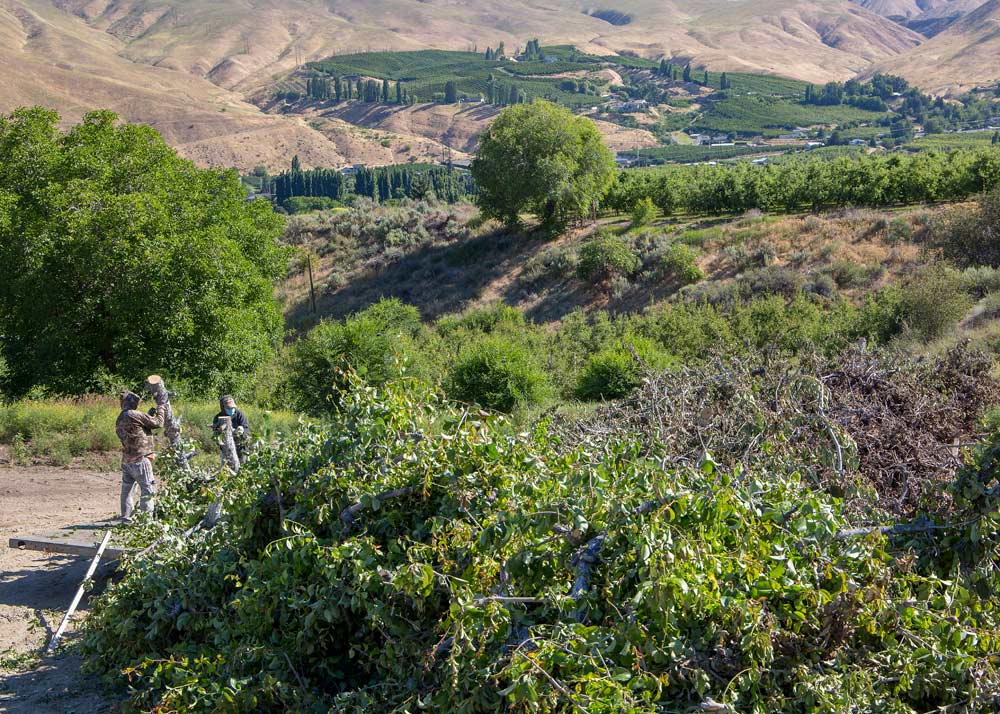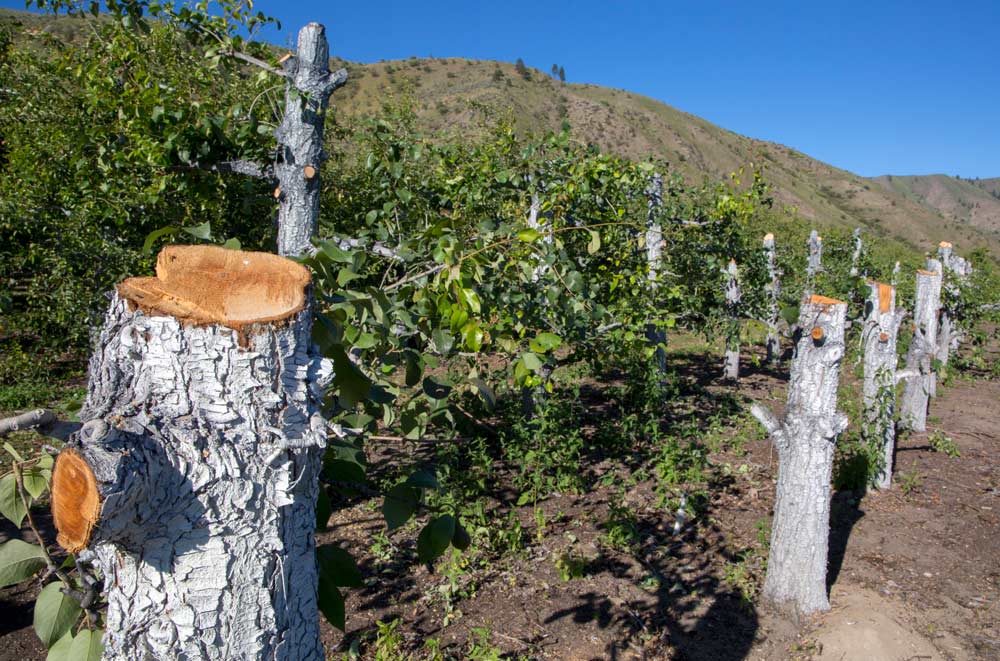
Miguel Medina, left, and Roberto Juarez heap fire blight cuttings into a massive burn pile in June in a pear orchard near Monitor, Washington. As predicted, pear growers in the Wenatchee Valley are seeing their worst fire blight year in decades. (Ross Courtney/Good Fruit Grower)
Let’s get all the superlatives out of the way.
“This will be the worst blight I will have seen in my career,” said Bob Gix, horticulturist for Blue Star Growers in Wenatchee, Washington.
“This year, it was like the perfect storm,” said Jeff Heath, director of field services for Stemilt Growers in Wenatchee. It’s the worst he’s seen since his field work began in 1978.
Filimino Gonzalez, a foreman for a Blue Star grower, has never experienced this much blight in his 34 years working pear orchards in the Wenatchee Valley. Ditto Juan Miguel Ruiz-Bautista, a crew boss in a nearby orchard who also has a long career under his belt.
Just as predicted, 2018 has been a bad year for fire blight in Washington, especially the Wenatchee Valley, the most productive pear region in the United States.
A combination of warm weather during bloom with a buildup of bacteria from previous years combined to make conditions ripe. A few rain showers caused three or four infection periods this year. Normally, the area sees one or two, Gix said.
Growers spent the spring months making two, sometimes three cuts in each row. Stumps stood branchless in many orchards, while burn piles sent plumes of white smoke across the horizon.
But their work may not be done.
Horticulturists and pathologists are encouraging growers to continue cutting away fire blight after they begin harvest this year, a task they normally might postpone due to other chores, such as setting out bins and prepping for harvesting later varieties.
“I would not wait until after all pear harvest was done or until the first of October,” Gix said.

Pear trees cut back to the stumps were a common sight this year in the Wenatchee Valley as growers tried to stay ahead of blight. (Ross Courtney/Good Fruit Grower)
Bartletts usually come off the trees first, often in August, and d’Anjous follow in September. Gix recommends growers start cutting back their Bartlett trees right after picking.
Tianna DuPont, Washington State University regional extension specialist, echoes that suggestion.
After harvest, pear trees go through a flush of new growth, the tissue of which is susceptible to infection. The ooze from any cankers still in the trees after harvest can be an infection source.
“It is certainly a good idea to encourage people to keep cutting out blight (after harvest),” DuPont said. “I know everybody is tired of it by that point.”
Also, try a copper application after harvest to protect that new growth, she said.

A burn pile of blight-infected cuttings in the Wenatchee Valley. (Ross Courtney/Good Fruit Grower)
Oregon also is having some rough times with blight, too. The Hood River area is seeing a bad year, especially in organic blocks, said Chad Wimmers, vice president of raw product for Diamond Fruit, but they’re not setting any records like they are in Washington.
“We’re not nearly as bad as what I’m hearing up north,” he said. He called conditions “worse than average but not catastrophic.” •
—by Ross Courtney






Leave A Comment